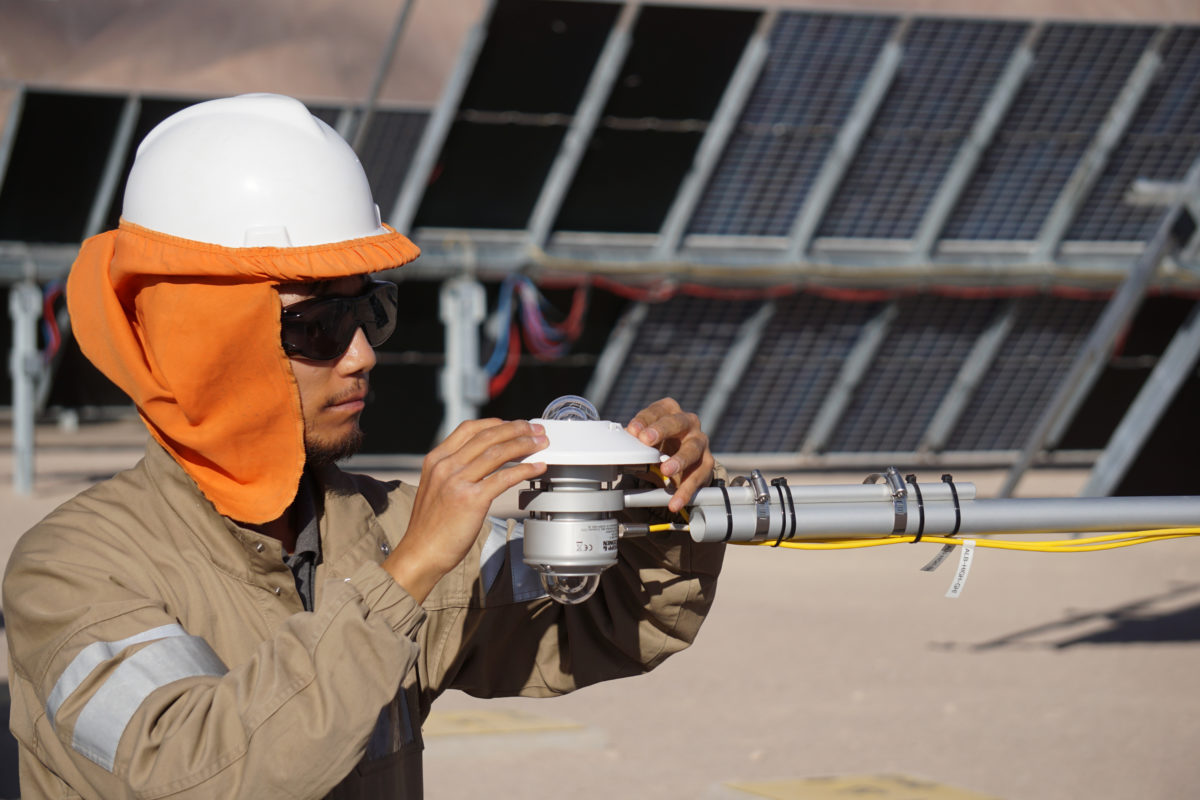Bifacial PV modules and single-axis trackers do go well together, but there are quite a few system parameters to consider to maximize an installation's yield. One of the most important ones is the orientation of the tracker.
At latitudes lower than 30 degrees, using bifacial modules on a single-axis tracker will increase energy yields by 45% if the trackers are set up in an east-west orientation, rather than the fixed-tilt north-west setup for bifacial modules. At latitudes above 30 degrees, fixed-tilt bifacial installations tend to outperform tracking mono-facial installations by 5-15% in terms of energy yield. These points are among the key findings of “Global analysis of next-generation utility-scale PV: Tracking bifacial solar farms,” which was recently published in Applied Energy.
The researchers – from universities in Bangladesh, Pakistan, and the United States – used multiple irradiance and temperature-dependent energy gain models to determine optimal system parameters for various locations. The team took values of pitch, view factor, and historical weather data for specific areas into account and modeled the energy yield of installations. By modeling different plant setups in various locations, the team was able to reach a number of conclusions regarding each site's optimal plant layout.
They concluded that fixed-tilt bifacial installations outperform mono-facial single-axis tracking installation by 5- 15% at locations in latitudes higher than 30 degrees. Additionally, north-south tracker orientations in regions where the seasons are more pronounced can improve energy yield during the winter. In contrast, east-west orientations improve energy yield during the summer months.
The researchers therefore suggest that for installations above 50 degrees latitude, north-south orientations should be used for bifacial trackers. But in regions closer to the equator, 50-degree, east-west-oriented trackers with bifacial modules are the best choice. “Thus, in terms of energy maximization, a bifacial tracking PV would be a worthwhile farm technology (sic) in most locations,” the scientists said.
The team also analyzed which land types promise the highest yields for bifacial tracking installations. To do this, the researchers put land into 17 different categories and analyzed the modeled yearly albedo for each land type. Reportedly, the maximum energy gain can be expected in the “Evergreen and Deciduous Broadleaf Forests” land category. However, the researchers said that such locations should be preserved for the sake of biodiversity. Project developers should therefore eye deserts and savannahs as the next best locations for PV generation.
Another variable in single-axis tracking is the pitch-over-panel-height ratio – the figure changes with different module and land costs. A pitch-in single-axis tracker solar array describes the spacing between the rows. Leaving cost aside, a project's energy yield increases the higher the pitch gets, as there is less inter-row shading and more unshaded space to improve albedo light collection. But bringing in the module-to-land cost ratio shifts the optimum pitch. For a modeled east-west installation in Washington, D.C., for example, the perfect pitch was between 2 meters and 3 meters for different cost-ratio scenarios.
The researchers aim to use their model to determine the economic viability of bifacial PV for agrivoltaics. They have suggested comparing the cost for vertical and tracking bifacial modules. The model they used in their research can reportedly be extended to model crop-specific tracking algorithms.
This content is protected by copyright and may not be reused. If you want to cooperate with us and would like to reuse some of our content, please contact: editors@pv-magazine.com.




By submitting this form you agree to pv magazine using your data for the purposes of publishing your comment.
Your personal data will only be disclosed or otherwise transmitted to third parties for the purposes of spam filtering or if this is necessary for technical maintenance of the website. Any other transfer to third parties will not take place unless this is justified on the basis of applicable data protection regulations or if pv magazine is legally obliged to do so.
You may revoke this consent at any time with effect for the future, in which case your personal data will be deleted immediately. Otherwise, your data will be deleted if pv magazine has processed your request or the purpose of data storage is fulfilled.
Further information on data privacy can be found in our Data Protection Policy.